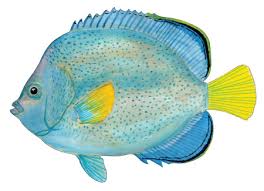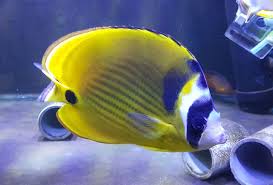
Dragons have been a central motif in Chinese culture for thousands of years, symbolizing power, strength, prosperity, and protection. In the context of Chinese mythology and historical dynasties, dragons have taken on many different forms, each representing specific attributes and characteristics. The role of dragons in Chinese legends is closely intertwined with the history and identity of the various Chinese dynasties, as these mythical creatures were often believed to shape or protect the ruling powers. From the ancient mythological dragons of early dynasties to the more symbolic dragons of later periods, the legend of the dragon continues to evolve, influencing Chinese culture and society in profound ways.
This article explores the various species of dragons featured in the legends of China’s imperial dynasties, tracing their significance and roles across different historical periods.
The Origin of Dragons in Chinese Mythology
Before diving into the specific species of dragons associated with different dynasties, it’s essential to understand the broader concept of the Chinese dragon. Unlike the malevolent dragons of Western mythology, Chinese dragons are generally benevolent, symbolizing wisdom, strength, and protection. In Chinese culture, dragons are believed to have been created during the Pangu, the primordial being who separated the heavens from the earth, laying the foundation for the world’s creation.
The dragon is often depicted as a hybrid creature with the body of a snake, the antlers of a deer, the claws of an eagle, and the face of a horse, embodying a combination of qualities from various animals. The dragon’s ability to fly and swim, as well as its connection to water and weather, has reinforced its position as a guardian of the land, often associated with rivers, seas, and rainfall.
Throughout the history of China’s dynasties, the representation of dragons has evolved, with distinct variations emerging during different imperial periods. Below, we explore several of the most iconic dragon species and their significance in the legends of the Chinese dynasties.
The Yellow Dragon (Huanglong) – The Dragon of the Emperor
One of the most famous and revered dragon species in Chinese history is the Yellow Dragon (Huanglong). This dragon is intricately tied to the Xia Dynasty (2070–1600 BCE), the first historically recognized dynasty of China. The Yellow Dragon is often considered the embodiment of imperial authority and the link between the heavens and the earth. According to legend, the Yellow Dragon was seen by the Yellow Emperor, Huangdi, who ruled during the early days of Chinese civilization. This sighting was regarded as an auspicious omen, symbolizing the divine approval of the emperor’s reign.
The Yellow Dragon is described as having a golden hue, signifying the emperor’s divine power. The presence of the Yellow Dragon in a ruler’s domain was believed to be a sign that the emperor was in harmony with the forces of nature, ensuring peace and prosperity for the realm. Throughout subsequent dynasties, the Yellow Dragon continued to be a symbol of imperial authority and was often depicted in imperial regalia, banners, and royal seals.
In the context of later dynasties, the Yellow Dragon symbolized the emperor’s role as the Son of Heaven, a ruler ordained by the gods. The Yellow Dragon became a symbol of legitimacy and divine right, and its presence was used to legitimize the authority of the ruling monarch. It was a creature that not only protected the emperor but also embodied the central role of the emperor in maintaining the balance of the cosmos.
The Azure Dragon (Qinglong) – Guardian of the East
Another prominent dragon in Chinese dynasties is the Azure Dragon (Qinglong), which is one of the Four Symbolic Creatures in Chinese mythology. The Azure Dragon is associated with the East and represents spring, renewal, and vitality. It is often depicted as a majestic, serpentine creature with the ability to fly and swim in both the sky and water.
The Azure Dragon holds significant importance in the Han Dynasty (206 BCE–220 CE) and beyond, where it was often seen as a symbol of imperial power and protection. The dragon was believed to be the guardian of the East, one of the four cardinal directions that formed the basis of Chinese cosmology. In some legends, the Azure Dragon was said to protect the country from the forces of chaos, guiding the emperor in times of conflict and ensuring a bountiful harvest.
This dragon’s association with the East is symbolic of the emergence of new life and growth, much like the arrival of spring. As such, the Azure Dragon became linked with ideas of prosperity, fertility, and regeneration. The dragon also represented the imperial family’s connection to the forces of nature, as emperors would often make offerings to this dragon in hopes of receiving protection and favor for their reign.
In addition to its role in mythology, the Azure Dragon’s influence extended into architecture and art. It was frequently featured in the design of palace interiors, imperial clothing, and royal insignia, symbolizing the emperor’s protection over the eastern part of the empire.
The Black Tortoise and White Tiger – The Lesser-Known Dragon Species
While the Azure Dragon and the Yellow Dragon are the most famous of the Four Symbolic Creatures, it’s important to note the presence of two other creatures in the legends: the Black Tortoise (Xuanwu) and the White Tiger (Baihu). These creatures are often seen as complements to the primary dragon and tiger imagery and contribute to the cosmological and mythological understanding of Chinese dragons.
The Black Tortoise, often depicted as a tortoise entwined with a snake, is associated with the North and symbolizes winter, endurance, and stability. It is considered a symbol of protection, especially in military contexts. While it is not as widely revered as the Azure Dragon or Yellow Dragon, the Black Tortoise is still an important part of Chinese cosmology.
Similarly, the White Tiger represents the West and symbolizes autumn, strength, and courage. Together with the dragon, the White Tiger and Black Tortoise form a complementary balance of opposing forces that govern the universe, reflecting the harmony between Yin and Yang.
The Dragon King – Ruler of the Seas and Waters
In Chinese mythology, the Dragon King (Longwang) is another highly significant dragon species. Unlike the celestial dragons associated with the emperor or specific elements of nature, the Dragon King is a ruler of the sea, controlling water and weather. There are typically Four Dragon Kings, each of whom governs one of the four seas that surround China. These Dragon Kings are considered powerful and important figures in Chinese legends.
During the Tang Dynasty (618–907 CE), the myth of the Dragon Kings became prominent, and the dragons were seen as protectors of the natural world. As the Chinese civilization had always relied on water for agriculture, particularly the irrigation systems that sustained crop growth, the Dragon Kings were revered as the keepers of life-giving water. They had the ability to control rainstorms, floods, and droughts, and were petitioned by common folk and emperors alike for favorable weather conditions.
The Dragon Kings are also central figures in Taoist beliefs, where they serve as deities of water and are often invoked during rituals aimed at securing good harvests, preventing floods, and protecting the people from natural disasters.
The Black Dragon and the White Dragon – Duality in Chinese Mythology
Within Chinese mythology, there are references to the Black Dragon and White Dragon, two polar opposite creatures that embody the concepts of Yin and Yang. The Black Dragon is often associated with the underworld, while the White Dragon is tied to the heavens. These dragons represent the cosmic balance between opposites—Yin and Yang, darkness and light, life and death.
The Black Dragon is sometimes linked to destruction and chaos, while the White Dragon symbolizes enlightenment, harmony, and renewal. In various legends, these two dragons are seen as rivals or complementary forces, each playing a crucial role in maintaining the natural order. The duality between the Black and White Dragon reflects the Taoist belief in balance and the interconnectedness of opposites.
The Dragon in the Ming and Qing Dynasties
During the Ming Dynasty (1368–1644) and Qing Dynasty (1644–1912), dragons continued to symbolize imperial power and divine authority. The Ming emperors, for example, used the dragon extensively in their royal symbolism, from the emperor’s robe to the imperial seals. The Dragon Throne, which was the seat of the emperor, is one of the most iconic symbols of the period. It represented not only political power but also the divine right of the emperor to rule over the nation.
The Qing Dynasty further cemented the dragon’s role in imperial imagery, using dragon motifs on royal garments, architecture, and ceremonial regalia. The Qing emperors even adopted the Five-Clawed Dragon, a more majestic and powerful version of the traditional dragon, to emphasize their supreme authority. The dragon was central to the grandeur and magnificence of the imperial court.
Conclusion
The dragon has played a pivotal role in the legends and beliefs of China’s dynasties, symbolizing power, protection, and the connection between heaven and earth. Each dragon species—whether the Yellow Dragon of the emperor, the Azure Dragon of the East, or the Dragon Kings of the seas—has carried distinct meanings and attributes, all of which reflect the changing needs and values of Chinese society throughout history. These dragons not only shaped the spiritual and cultural landscapes of their respective eras but also continue to inspire awe and reverence in modern Chinese culture. The dragon remains a timeless symbol of strength, wisdom, and unity, bridging the past with the present in a rich tapestry of mythology and tradition.










